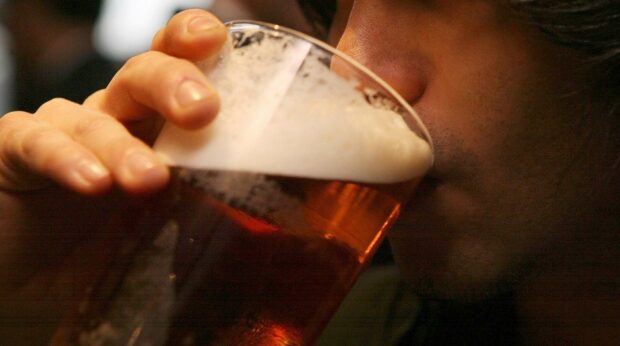Hundreds of youngsters have been admitted to hospitals across the Highlands for alcohol abuse in the last three years.
Shock new figures released today show 233 children aged 10-18 were treated for drink-related illnesses or incidents between 2011-13.
Another 165 young people were treated in the Western Isles, along with 30 in Shetland and 103 in NHS Grampian hospitals.
Overall the totals showed 4,884 people aged between 10-18 were admitted to hospitals across Scotland in the last three years, including 225 children under 10.
Liberal Democrat health spokesman Jim Hume, who obtained the “troubling” statistics under freedom of information legislation, said the public would be “shocked” to learn so many youngsters were hitting the bottle.
He said the levels should “set alarm bells ringing across society” and called on the Scottish Government to do more to enure youngsters are properly taught about the dangers of alcohol.
Last night, the Scottish Government insisted it was committed to improving education about substance misuse, and said the figures underlined the need to introduce a minimum price for alcohol. The proposal is currently being delayed by a legal challenge from the Scotch Whisky Association (SWA).
Mr Hume’s remarks were echoed by Richard Burkitt, project director at Inverness-based addiction charity For the Right Reasons, who said the risks needed to be spelt out to children in hard-hitting lessons in primary schools.
The father-of five said youngsters were increasingly being influenced by older people drinking heavily at home in front of them, instead of going to the pub.
“Lessons should be started in primary six with some hard hitting facts about what it is like if you become addicted to alcohol,” he added.
“We have given talks in primary schools and taken someone who has been a life long drinker who have told their story and that can be quite harrowing.
“he world out there does need to help – we need to be far more vigilant in the community.
“Shops need to tell a person they are too young and we need to be much more careful about people buying for an under-aged person.”
One Inverness woman, who has a drink problem and asked to remain anonymous, told the Press and Journal that a combination of boredom and easy access to alcohol in Highland communities was to blame for the figures.
“There is not much for young people to do in Inverness so that is why they struggle with alcohol,” she added.
“Alcohol is everywhere and when they are younger, kids are not taught how to stay away from drink.”
Elsewhere the Lib Dem figures showed NHS Ayrshire and Arran reported the highest number of alcohol-related incidents, with 1,483 10 – 18 year olds receiving treatment between 2011 and 2013. NHS Tayside treated 1,385 people over that period.
Mr Hume said: “It should set alarm bells ringing across society that so many young people who should not be drinking are being treated for alcohol-related conditions.
“Scottish Government ministers must work with young people to develop the most effective response to these troubling figures.”
A Scottish Government spokesman said: “It is regrettable that legal action has delayed the implementation alcohol minimum unit pricing, but we are absolutely committed to its introduction. I believe that this policy, as part of a package of measures, will be an effective way to tackle the problems caused by Scotland’s difficult relationship with alcohol.
“We are currently taking forward substance misuse education work in schools, where children and young people will learn about a variety of substances including alcohol, medicines, drugs, tobacco and solvents. They will explore the impact risk taking behaviour has on life choices and health.
“By educating children and young people about alcohol and the impact misuse can have, we aim to prevent them making unhealthy choices.”
